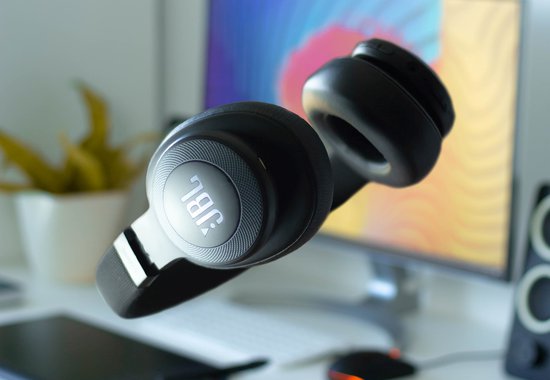Author|Alli Romano
Source: www.mediavillage.com, December 2021
Longform podcast storytelling and voice-activated shopping may not be entirely new concepts today. But watch those spaces. Both are among the trends that could mushroom in the next year. They are among the predictions courtesy of audio content and entertainment company Audacy, which has identified a series of marketing opportunities that hinge on voice and audio and relate to the consumers’ desire for efficient and effortless access to entertainment and information. Below are five that marketers should bear in mind:
1) A Perfect Data Storm
The ability to instantly answer consumers’ questions and help them solve problems is becoming a key advantage for marketers who lean into audio. There’s a three-legged stool that makes that possible: voice, the cloud and 5G speed.
The Internet of Things (IoT) will become even more present in our daily lives, as refrigerators alert us when we’re running low on certain must-have items like milk for the kids, and cars tell us when the left rear tire is losing its tread. Marketers are likely to find ways to integrate messages into key pieces of IoT communication.
“When you mash up voice, 5G and the cloud — with voice as the interface as opposed to a screen or search engine — the world is your oyster,” said Tim Murphy, Executive Vice President of Business Development at Audacy, which operates AM/FM radio stations, digital streaming, podcasting, and live events and experiences.
2) Voice Shopping
Say goodbye to scrolling and clicking. Consumers are rapidly embracing voice to access information, entertain themselves and shop.
By 2023, voice commerce is expected to exceed $80 billion annually, and global smart speaker revenue is likely to hit $35.5 billion by 2025, according to data from Juniper and Statista, respectively. Early adopters are using voice to access product information and shop. (Call it v-commerce.) Voice shopping is steadily growing, with 20% of adults adding items to their shopping carts and 9% purchasing via smart speakers, according to eMarketer research.
So far, users are giving voice ads a thumbs up. Some 38% of users who have experienced a voice ad say they’re less intrusive than TV, digital, print or social ads. And 39% report the ads to be more engaging than messages on those other platforms. That’s according to survey results from Adobe.
“The ability to layer in conversational commerce via smart speakers is something we’re really excited about,” said Ken Lagana, Audacy’s Executive Vice President of Digital Sales and Strategy.
Savvy brands are taking advantage of this. For example, Wild Turkey offers guided whiskey tastings through voice, and Hellman’s Mayo shares recipes with Alexa users.
Voice is improving customer experiences early in the sales funnel, as shoppers search for products and seek out customer service. Yet even though voice creates two-way conversations with consumers, it’s largely untapped as a marketing tool; only 15% of brands have a smart-speaker strategy according to the Audacy’s State of Audio guide.
3) Long-form Audio Storytelling
We’ve all heard stories about the early days of radio when families would gather together and listen to radio dramas. Now, thanks to podcasting, long-form scripted audio is back and bigger than ever. As more Americans get hooked on podcasting — there are now 176 million weekly podcast listeners, according to Edison Research — fans are searching for fresh, engaging content. Long-form, scripted audio (also known as “podcast movies”) offers an entertaining escape and immersive experience, elevating podcasting to a new level.
Audacy’s Cadence13 podcast studio is leading in this emerging genre with two newly released podcast movies. Treat tells the story of an everyday American town turned upside down by social turmoil. Ghostwriter features an author who begins investigating the crime she is writing about.
Just like the TV series and movies, these feature-length dramas have high-production values, big-name casting and cutting-edge sound design. And, needless to say, there are brand-integration opportunities.
4) The Sound of Social
Audio fans are getting more social than ever, thanks to new apps that allow like-minded users to communicate without the screen fatigue or doom-scrolling associated with photo and video-based social networks. In “rooms” or “spaces,” social audio users chat about common interests or listen to experts. Clubhouse was an early entrant, and big-name tech companies, such as Twitter and Facebook, have quickly jumped in, too.
So far, brands have struggled to monetize social audio, but it is still early innings. Users are drawn to these audio spaces for community and socialization. As they mature, brands should keep a close eye on this space.
5) Content Still Rules
Technology is changing rapidly, but there are some constants to count on. Audiophiles are fiercely loyal to their favorite DJs, hosts, podcasters, artists and stations. As a result, they’re spending more time than ever listening to audio daily.
There are reasons for that. Amid our hectic lives, audio offers a respite from smartphones, TVs and computers. Listeners consume programming on their own terms. And the menu of radio, digital streaming and podcasts is constantly expanding.
By combining AM/FM radio with digital audio and podcasting, brands can turbocharge campaign results. The combination bundles traditional radio’s reach and scale with digital audio and podcasting’s targeting capabilities. When advertisers ride this “sonic wave” of audio content, Audacy says, they can increase return on investment; raise brand engagement; and increase conversion.
To catch more audio trends, check out The Watch List from Audacy’s State of Audio guide.
Click the social buttons to share this story with colleagues and friends.
The opinions expressed here are the author’s views and do not necessarily represent the views of MediaVillage.com/MyersBizNet.

